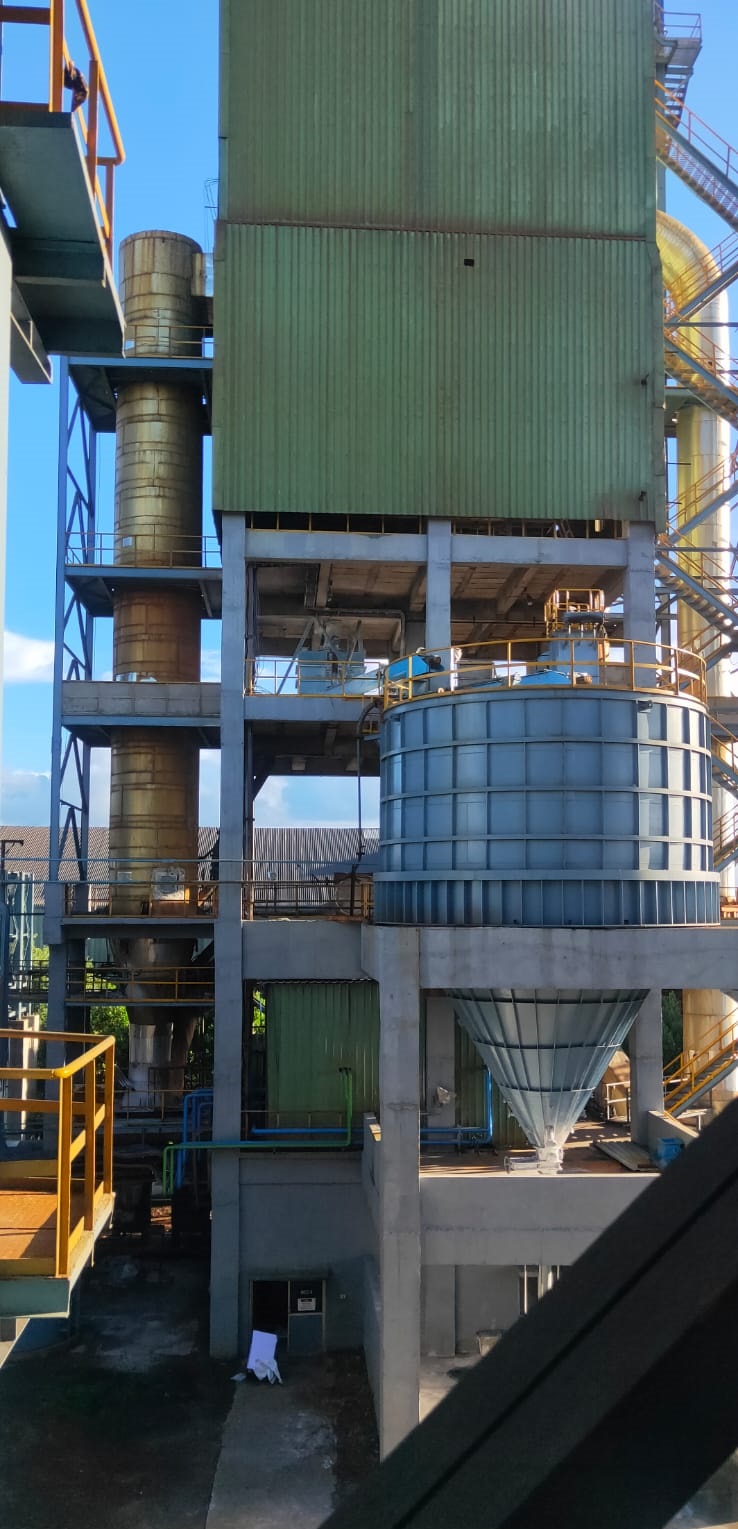FGD – Our key technology
Introduction:
Clair has successfully installed Dry FGTS System for a Petcoke calcination plant located in Andhra Pradesh, India. The system was commissioned in 2015 for Line-1 and in 2017 for Line-2.
The system installed is provided to scrub the SO2 content (~6,000 mg/Nm3) in the flue gases from each line of petroleum coke calciner and also particulate matter. The system is able to maintain the SO2 emission of lesser than or equal to 600 mg/Nm3 and also control the emission of particulate matter to ≤ 30 mg/Nm3.
Petroleum coke calcining is a three step process, which includes drying, de-volatization and densification. The coke calcining process is a time-temperature function, conducted in an oxygen deficient atmosphere. The petroleum green coke is fed into a refractory lined furnace where the volatiles are driven off during the calcining process in an oxygen deficient atmosphere. Petroleum coke has high heat and low ash content, which make it a fuel for power generation, and also has high sulphur and low volatile content. This poses a challenge to scrub the acidic gases from the combustion process.
In order to limit the sulphur content from burning petroleum coke, flue gas cleaning system is (flue gas desulphurization) employed. The installed system is based on Dry FGTS system which consists of Fluidized bed scrubber (FBS) followed by a bag filter. The gases coming from the furnaces pass through a Waste Heat Recovery System (WHRS) and then enter the FBS. In the FBS, alkali reagent hydrated lime in dry form is injected. Water is sprayed at a specific zone in the FBS reactor to aid in the reaction process and also to reduce the temperature of the flue gases. As the flue gases moves along the height of the FBS reactor, reaction between hydrated lime and SO2 takes place to form salts of calcium (calcium sulfate & calcium sulfite). The gases then pass to the bag filter where the reaction products are collected. Majority of the dust collected in the bag filter is re-circulated back to the FBS reactor as the dust collected has some percentage of unreacted lime. To better utilize the unreacted lime and also to achieve reduction of fresh reagent consumption, re-circulation in Dry system is required. Part of the re-circulated dust is taken out as bleed stream and sent for disposal.
Since the installation of the dry system, the FGTS system is running successfully achieving both SO2 and particulate matter emission norms.
Data/ Table:
Table 1: Dry System Parameters
Sl. No. | PARAMETERS | UNIT | Uncontrolled Emissions From Boiler | Outlet Emissions |
1. | SO2 | mg/Nm3 | 6,000 | 600 |
2. | Particulate Matter | mg/Nm3 | 3,000 | 30 |
Picture:

Figure 1.Overview of the FGTS System for a Petcoke Calcination Plant at Line -1